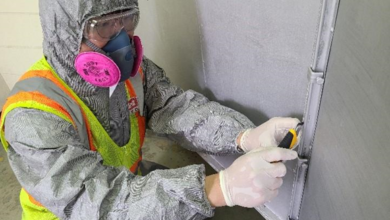Japanese Knotweed Identification Mistakes That Could Cost You Thousands

Introduction
Japanese Knotweed is one of the most invasive plant species in the UK — and one of the most misunderstood. Failing to correctly identify this aggressive plant can result in severe financial consequences, from property devaluation to legal disputes and denied mortgage applications. In this guide, we’ll uncover the most common Japanese Knotweed identification mistakes and how to avoid them — potentially saving you thousands.
Why Accurate Identification Matters
Before jumping into the common mistakes, it’s vital to understand why Japanese Knotweed identification is so critical:
- Mortgage Risks: Lenders may refuse mortgages or reduce valuations if Knotweed is suspected on or near a property.
- Legal Liability: Under the Wildlife and Countryside Act 1981, allowing Knotweed to spread can lead to prosecution.
- Remediation Costs: Treating an advanced infestation can cost tens of thousands of pounds.
That’s why correctly identifying Japanese Knotweed early — and taking appropriate action — is essential for homeowners, buyers, and developers.
Mistake #1: Confusing Knotweed with Lookalike Plants
One of the biggest traps is mistaking Japanese Knotweed for harmless plants such as:
- Bindweed – Similar heart-shaped leaves but lacks the distinctive bamboo-like stems.
- Himalayan Balsam – Also invasive, but has pink flowers and very different leaf structure.
- Dock or Red Bistort – These share similar leaf shapes but not the hollow stems or zig-zag pattern of Knotweed.
🔍 TIP: Japanese Knotweed has shield- or spade-shaped leaves, a zig-zag stem pattern, and forms dense clumps. Its stems are hollow and resemble bamboo.
Mistake #2: Only Looking in the Summer
Many property owners assume they can only identify Japanese Knotweed in spring or summer when it’s in full growth. But this is a costly assumption.
- In autumn, the leaves yellow and drop.
- In winter, the plant dies back to brittle, brown stems — still a sign of infestation.
- In spring, red/purple shoots emerge, often mistaken for asparagus.
🌱 Year-round vigilance is essential — especially before property purchases or landscaping projects.
Mistake #3: Relying on Outdated Internet Images
Google Images is packed with outdated or mislabelled photos of Japanese Knotweed. Many show the plant at its most obvious growth stage (mid-summer), but identification isn’t always that clear-cut.
- Knotweed varies in appearance depending on soil, location, and growth stage.
- Amateur photos often confuse it with similar-looking plants.
📸 Solution: Trust professional resources like CYB Environmental’s Japanese Knotweed Identification Page, which features accurate images and descriptions for all seasons.
Mistake #4: Ignoring Underground Growth
Even if the visible stems have been removed, Japanese Knotweed’s rhizomes (underground roots) can remain active and spread rapidly.
- Rhizomes can grow up to 3 metres deep and 7 metres outward.
- A new plant can sprout from as little as 0.7g of rhizome.
🏗️ This is especially dangerous for construction projects or land purchases. A professional site survey is the only way to be sure.
Mistake #5: Skipping a Professional Assessment
Ultimately, the most expensive mistake is trying to assess Japanese Knotweed without expert help.
- DIY identification can easily miss early-stage growth or dormant rhizomes.
- Missed infestations can lead to legal disputes between buyers and sellers.
- Lenders and insurers often require formal identification and treatment plans from accredited specialists.
✅ CYB Environmental offers expert site surveys and management plans to ensure accurate identification and compliance with UK regulations.
Conclusion
Whether you’re a homeowner, landlord, buyer, or developer, misidentifying Japanese Knotweed can lead to serious — and expensive — consequences. Don’t rely on guesswork or outdated advice.
🔎 Get peace of mind today — contact CYB Environmental for professional Japanese Knotweed Identification and treatment solutions.




